[Big read] Class dismissed: The quiet collapse of US-China university partnerships
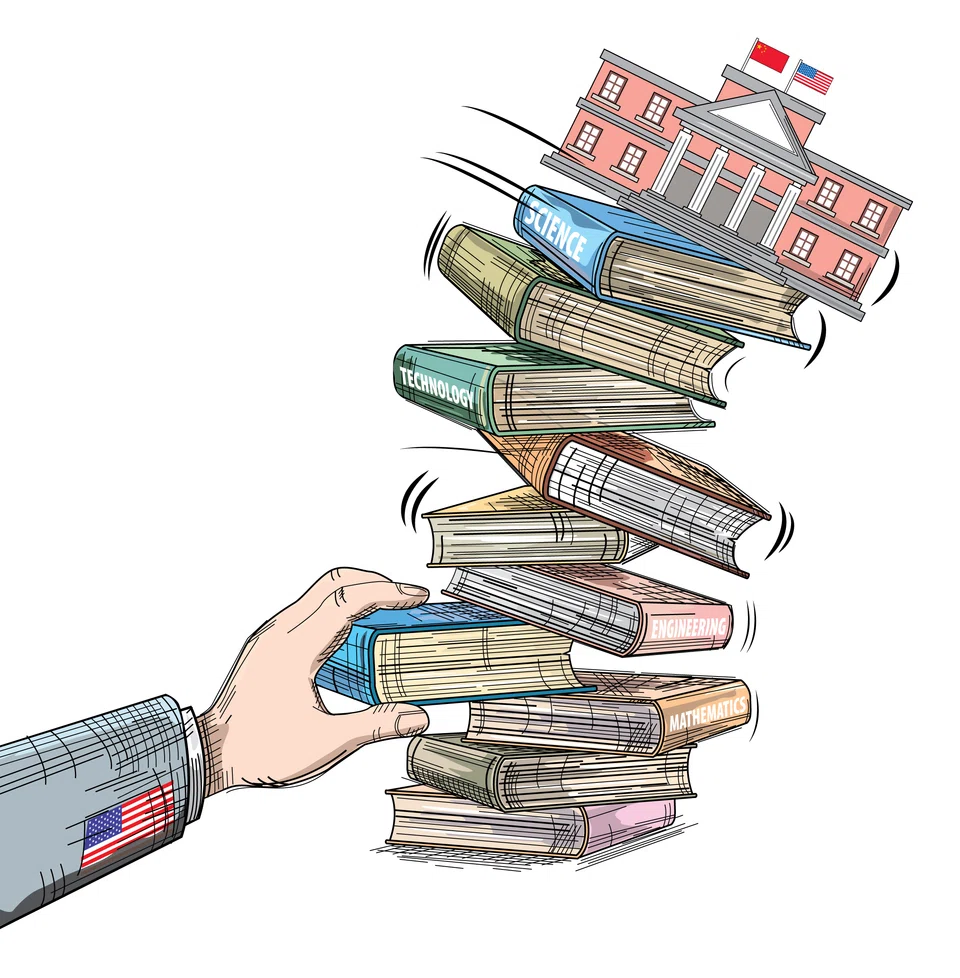
Joint educational programmes between China and the US are the latest casualties of geopolitical tensions between the two countries. Lianhe Zaobao senior correspondent Chen Jing reports on the growing uncertainty facing these collaborative institutions — some of which have already been forced to shut down.
When the results of the college entrance exam were released, 18-year-old Shanghai candidate Lu Yu (pseudonym) posted on social media platform Xiaohongshu, seeking advice on applying to the University of Michigan–Shanghai Jiao Tong University Joint Institute (UM-SJTU Joint Institute). But the most common response was: “Wait, didn’t the UM-SJTU Joint Institute shut down?”
According to the website of the Chinese Ministry of Education, the UM-SJTU Joint Institute’s license has been extended to 2033, but its current status is “enrolment suspended”.
A Lianhe Zaobao review of the ministry’s list of overseas collaborative institutions shows that as of May this year, at least eight US-China joint institutes — including UM-SJTU Joint Institute — have either terminated partnerships or suspended enrolment. This accounts for 20% of the 41 registered US-China joint undergraduate or higher-level institutions.
US-China STEM programmes close amid security fears
These eight institutions share a common feature: they primarily focus on STEM (science, technology, engineering and mathematics) disciplines. Many of their Chinese partner universities have been placed on the US Entity List, or have drawn attention from the US government due to the outcomes of their collaborations.
In September last year, the US House Select Committee on the Chinese Communist Party released a 113-page report that singled out and criticised several China-US joint institutions. The report alleged that these cooperative programmes were transferring key US technologies and expertise to China, which were then used to cultivate Chinese talent and promote China’s technological advancement.
That same month, the Georgia Institute of Technology and the University of California, Berkeley, announced their withdrawal from joint programmes with Tianjin University and Tsinghua University, respectively.
... China-US institutions where the US partner is a private university, and where humanities programmes carry more weight — such as NYU Shanghai and Duke Kunshan University — continue to operate normally, though their future is also uncertain.
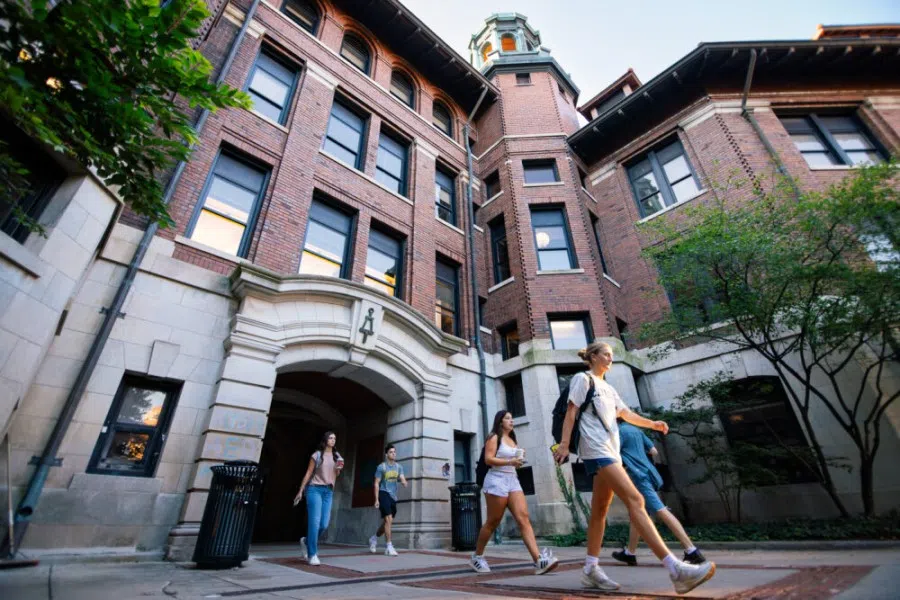
In January this year, the University of Michigan announced it was terminating its nearly 20-year partnership with Shanghai Jiao Tong University. By May, the webpage for the Sichuan University–Pittsburgh Institute on the Ministry of Education’s regulatory site also showed an “enrolment suspended” status.
With that, of the so-called “Five Golden Flowers” (referring to the most prominent China-US university partnerships), only the joint institute between Zhejiang University and the University of Illinois Urbana-Champaign (the ZJU-UIUC Institute) remains. However, even this institute announced last month that it would stop enrolling students in several popular STEM majors, including computer science, power engineering, and mechanical engineering.
Even lesser-known joint institutes have not been immune to political pressure. In February this year, John Moolenaar, Chair of the House Select Committee on the CCP, and Tim Walberg, Chair of the House Committee on Education and the Workforce, sent letters to several US universities, urging them to terminate collaborations with Chinese universities on the grounds of national security risks.
In a statement on his personal webpage in March this year, Walberg announced that Oakland University had committed to withdrawing from its partnership with Zhengzhou University of Light Industry. On 28 May, Eastern Michigan University declared it would end its collaborations with two universities in Guangxi — Guangxi University and Beibu Gulf University.

Following the withdrawal of their American partners, some Chinese institutions have restructured their programmes. The Tsinghua-Berkeley Shenzhen Institute’s programmes have been absorbed into the Institute for Data and Information at Tsinghua University’s Shenzhen International Graduate School. This year, the UM-SJTU Joint Institute began recruiting students under the new provisional name Pujiang International College. Meanwhile, Sichuan University has established a new partnership with Rutgers University.
... higher education has become a significant flashpoint in recent years amid rising tensions between China and the US. “This is a new development trend.” — Professor Yong Chen, Associate Dean, School of Humanities, University of California, Irvine
Humanities, private US universities untouched (For now)
By contrast, China-US institutions where the US partner is a private university, and where humanities programmes carry more weight — such as NYU Shanghai and Duke Kunshan University — continue to operate normally, though their future is also uncertain.
According to Duke University’s student newspaper The Chronicle, Duke Kunshan University’s current agreement will expire in 2028, but Duke University has not yet made a public statement on whether it intends to renew the agreement. In May this year, Moolenaar and Walberg accused Duke Kunshan University of contributing to China’s military and technological development, thereby endangering US national security.

Around the same time, Senator Rick Scott of Florida proposed a bill to restrict federal funding to US universities affiliated with certain Chinese institutions, aiming to prevent “espionage and theft of American research and IP”. The bill has already passed in the House of Representatives.
Professor Yong Chen, a historian and associate dean of the School of Humanities at the University of California, Irvine, told Lianhe Zaobao that higher education has become a significant flashpoint in recent years amid rising tensions between China and the US. “This is a new development trend.”
Educational decoupling as tech war heats up
The trajectory of China-US joint institutes mirrors broader shifts in bilateral relations over the past two decades.
In 2005, the US described China and the US as “stakeholders”, paving the way for expanded cooperation in education, trade, and diplomacy. A surge of joint academic ventures emerged in this period. In 2006, then Zhejiang party secretary Xi Jinping visited Kean University in New Jersey to witness the signing ceremony for Wenzhou-Kean University, a China-US collaborative institution.
In January 2024, a research team collaboration between Tianjin University and Georgia Institute of Technology developed the world’s first functional semiconductor made from graphene. The Select Committee on the CCP, formed in 2023, accused this technology of helping China circumvent US restrictions on advanced semiconductors.
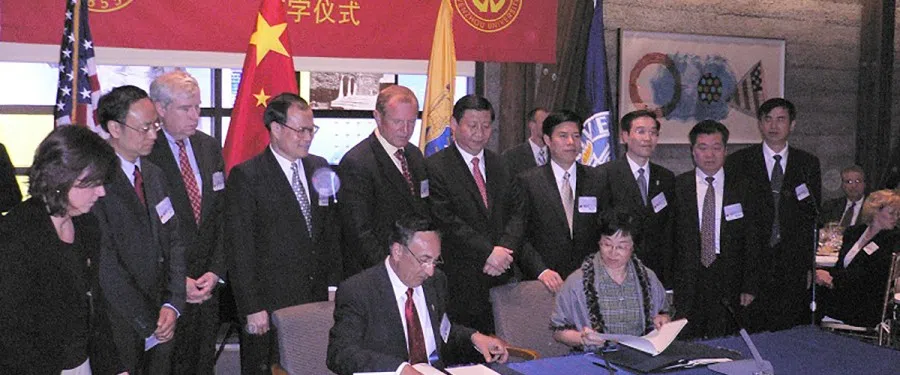
Over the past decade, enthusiasm for US-China collaborative educational institutions has waned as relations shifted from cooperation to competition. Since 2018, the intensifying tech war and concerns about China acquiring sensitive technology through academic exchanges have accelerated decoupling in educational fields.
Chinese scientists, researchers, and students targeted
During Donald Trump’s first term as president, investigations were launched against Chinese scientists and researchers with ties to China, under the pretext of combating economic espionage. The investigation forced many Chinese researchers to leave the US and return to China. In the past couple of years, China-US joint educational institutes have become new targets for criticism.
In January 2024, a research team collaboration between Tianjin University and Georgia Institute of Technology developed the world’s first functional semiconductor made from graphene. The Select Committee on the CCP, formed in 2023, accused this technology of helping China circumvent US restrictions on advanced semiconductors.
In October 2024, five Chinese exchange students from the UM-SJTU Joint Institute claimed that they inadvertently entered a US military exercise area in northern Michigan while watching a meteor shower. They were subsequently questioned by the FBI on suspicion of espionage. Following this, Moolenaar demanded that the University of Michigan terminate its cooperation with Shanghai Jiao Tong University, asserting that the joint institute was aiding China in its military modernisation efforts.
“Everything is seen as a threat; everything is related to security; and everything is connected to the military.” — Peter Hessler, an American author who previously taught at the Sichuan University-Pittsburgh Institute
When interviewed, American author Peter Hessler, who previously taught at the Sichuan University-Pittsburgh Institute, stated bluntly that the notion that China-US joint institutions facilitated technology transfer to the Chinese military was “nonsense”.

He added that members of the select committee did not understand China and already held preconceived biases about China. “Everything is seen as a threat; everything is related to security; and everything is connected to the military,” he said.
Strict censorship for academics
On the other hand, most China-US joint institutions are predominantly led and managed by the Chinese side, imposing stricter controls on curriculum content and the speech rights of foreign staff. This presents additional challenges for joint educational ventures between the two countries.
The Insider Higher Ed website reported that a former Wenzhou-Kean University lecturer received a list of prohibited classroom topics, including Hong Kong’s political situation and Xinjiang’s human rights issues. This lecturer was also reprimanded by a Chinese vice-chancellor for referring to Taiwan as separate from mainland China during a class.
Hessler’s contract at the Sichuan University-Pittsburgh Institute was terminated in 2021 after two years of teaching, without a stated reason. In his recently published book, Other Rivers: A Chinese Education, he revealed that Sichuan University professors suggested his termination might stem from his articles commenting on China’s Covid-19 pandemic, which had drawn criticism from nationalist netizens and exerted political pressure on the institution.
Educational exchanges still important
Chen predicted that while China-US university collaborations would not cease completely, joint educational ventures would almost certainly stall. The willingness of American university professors to collaborate with China will also decrease, and Chinese students studying in the US will face greater challenges when it comes to selecting their majors, among other issues.
However, he emphasised that despite the current environment, many US scholars still wished to continue their exchanges with Chinese universities and scholars. “And this is also crucial for maintaining positive China-US interaction.”
For some Chinese students and parents, joint China-US institutions offer a cost-effective option when it comes to “attending prestigious schools with lower gaokao scores”.
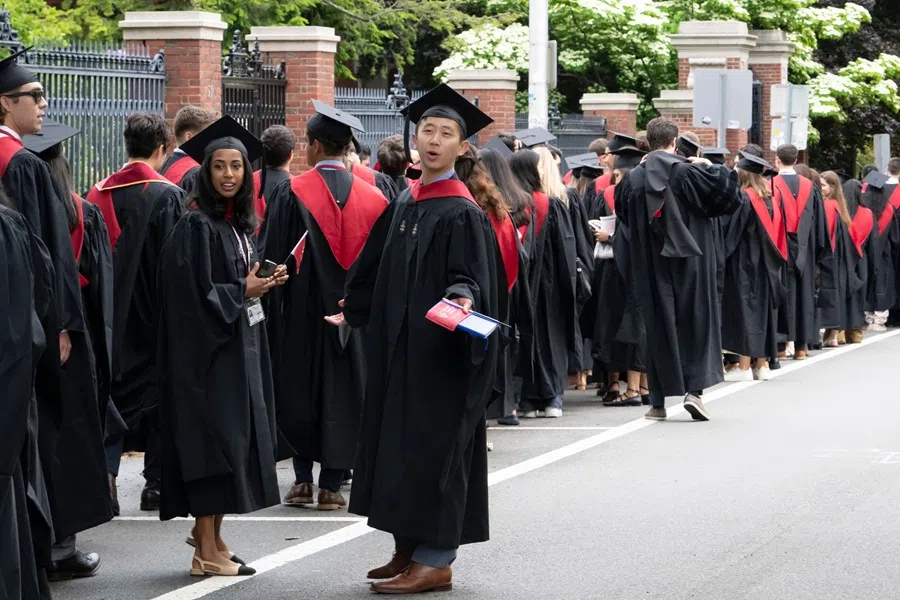
Hessler pointed out that while the Trump administration claims it wants to fix the trade imbalance with China, it also simultaneously attacked academic exchanges and Chinese students coming to the US, which was contradictory. “Higher education is one of the most valuable exports that the US has right now. This is an American product that Chinese consumers actually want…by cutting this off, the Trump administration is only making the trade imbalance worse.”
He feels that it is especially important to have various forms of educational exchanges, despite the tense political climate. “Most China experts believe this. But China experts are not the ones driving the Trump administration’s policy on China.”
Joint China-US institutions still an attractive option
For American universities, establishing campuses in China is a way to increase their visibility, student base and revenue. For some Chinese students and parents, joint China-US institutions offer a cost-effective option when it comes to “attending prestigious schools with lower gaokao scores”.
Tang Ying (pseudonym), a student at the Sichuan University-Pittsburgh Institute, told Lianhe Zaobao that in 2023, the admission score requirement for the institute was roughly ten-odd points lower than that for the same major at Sichuan University. “Those applying to Sichuan University-Pittsburgh Institute were typically students whose scores were just short of the mark for Sichuan University, or those who had plans to study abroad but did not do their undergraduate studies in the US.”
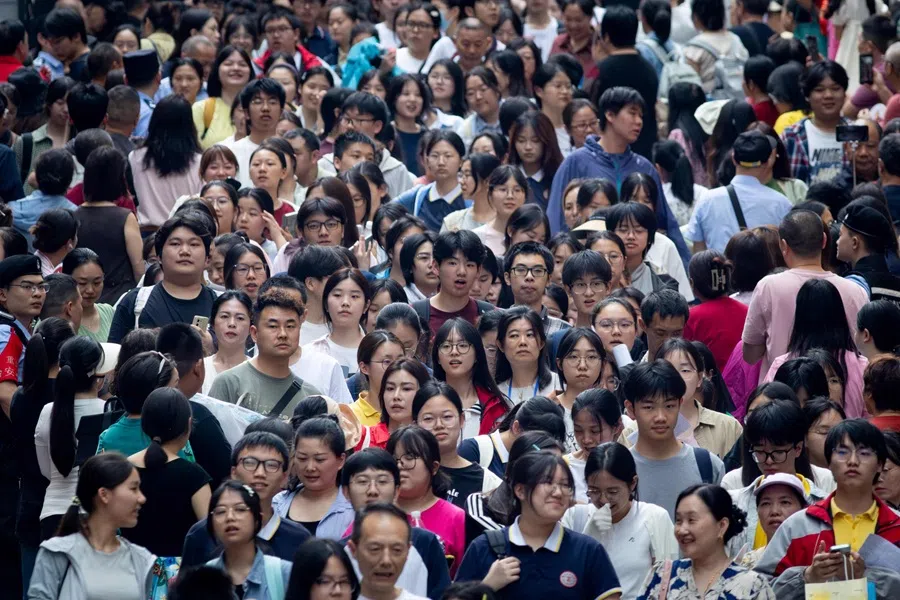
Tao Jiajia (pseudonym), a student at the UM-SJTU Joint Institute, revealed that the annual tuition was 75,000 RMB (approximately US$10,474), which, although six to seven times higher than typical Chinese universities, is far less than the cost of studying abroad in the US. Graduates would also receive degrees from both Shanghai Jiao Tong University and the University of Michigan.
Tao’s “2+2” programme allows her to complete the first two years of studies at Shanghai Jiao Tong University before continuing the final two years at the University of Michigan.
She said that graduating this way gives her an edge if she chooses to pursue graduate studies in the US, compared to applying directly from China. At the same time, if she decides to return to China for work, degrees from both Chinese and American universities are highly valued, so it becomes a “win-win either way”
... joint-venture colleges tend to have more foreign faculty, a more streamlined curriculum and greater flexibility for students in managing their time. — Yao Shujie, a former instructor at the University of Nottingham Ningbo
Joint institutes often offer the option of completing all four years of study in China as well. According to the official website of the Miami College of Henan University, the school uses bilingual or English instruction to help students realise their dream of studying at a world-class university without leaving the country, all at a much lower cost than studying abroad. The college held its 2025 undergraduate commencement ceremony in June, but admissions information has not been updated since June 2023.
In terms of teaching models, joint programmes also differ significantly from regular Chinese universities. Yao Shujie, who previously taught at the University of Nottingham Ningbo, noted that joint-venture colleges tend to have more foreign faculty, a more streamlined curriculum and greater flexibility for students in managing their time.

Tang also said that compared to the rote memorisation and standardised examinations common in regular Chinese universities, the Sichuan University-Pittsburgh Institute offers more hands-on courses and diverse assessment methods, allowing students to have a richer learning experience. Furthermore, the use of English as the sole medium of instruction also lays a stronger foundation for future overseas endeavours.
Many uncertainties
However, the US government’s repeated threats to revoke visas for Chinese students, along with many US universities withdrawing from joint programmes, have caused anxiety among Chinese students who are studying or planning to enrol in joint programmes.
Data from the UM-SJTU Joint Institute programme shows that 87.4% of the 2024 graduates pursued further studies abroad. Among the 174 who went overseas, 153 chose the US.
Tao said that the college collaborates with over 20 global universities, but its partnership with the University of Michigan is the strongest, allowing direct credit transfer. With the University of Michigan’s withdrawal, the college has been renamed “Pujiang International College” (浦江国际学院, provisional name), and future admissions may be affected.
... students admitted to joint-venture colleges through China’s regular university recruitment system will still receive a domestic degree even if the partnership ends, so there is no risk of “unfinished degrees”. — Xiong Bingqi, Director, 21st Century Education Research Institute
Xiong Bingqi, director of the 21st Century Education Research Institute, pointed out in an interview that students admitted to joint-venture colleges through China’s regular university recruitment system will still receive a domestic degree even if the partnership ends, so there is no risk of “unfinished degrees”. However, pursuing further studies in the US through such programmes will become more difficult in the future.
Yao noted that while Chinese universities and local governments once sought foreign cooperation to enhance teaching methods and educational quality, China’s higher education is now significantly more competitive, and the gap with foreign universities has narrowed. Consequently, “joint-venture institutions are less attractive than before, but still offer an additional option for middle-class families with specific needs”.
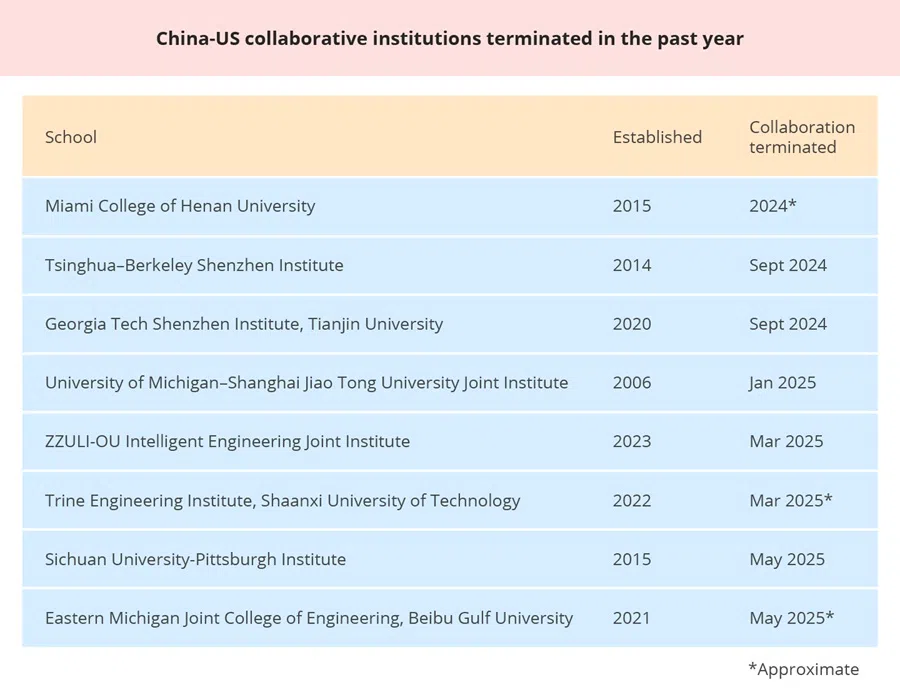
Lu Yu (pseudonym), a recent high school graduate, was just admitted this month to the newly renamed UM-SJTU Joint Institute. He said in an interview that his main reason for applying was the opportunity to enter Shanghai Jiao Tong University’s highly sought-after computing programme with a relatively lower gaokao score. This will fulfil his dream of studying at either Fudan or Jiao Tong.
Lu learned from a senior that Shanghai Jiao Tong University still maintains cooperation with the University of Michigan, albeit under a new programme name. Even if studying in the US is no longer an option, students can still apply to universities in other countries. However, he admitted that in the current climate, his overseas study plans “just don’t feel like something I can decide right now.”
The new partnerships mainly involve China-friendly countries such as Malaysia, Hungary, Poland and Russia, with popular fields including data science, artificial intelligence, software engineering, and information management.
China looks elsewhere for partnerships
Despite setbacks in cooperation with the US, China has continued to actively promote joint education programmes with foreign institutions, shifting its focus toward Central and Eastern Europe and Southeast Asia.
According to statistics from the updated list of China-foreign joint academic programmes in May, 44 new institutions and 68 new programmes were added this year. The new partnerships mainly involve China-friendly countries such as Malaysia, Hungary, Poland and Russia, with popular fields including data science, artificial intelligence, software engineering, and information management.
Shanghai Jiao Tong University, for instance, launched a joint PhD programme with the National University of Singapore in 2018. It has also partnered with Nanyang Technological University in 2022 to offer joint PhD admissions in fields such as engineering, computing, and social sciences. Graduates will receive a doctoral degree jointly awarded by both institutions.
The 21st Century Education Research Institute’s Xiong noted that due to growing uncertainties in China-US cooperation, more Chinese universities are seeking partnerships elsewhere. This also reflects the increasingly diverse landscape of overseas education. “In the past, most students aimed for the US, but now many are considering Canada, Europe, Japan, South Korea, or Southeast Asian countries,” he said.
This article was first published in Lianhe Zaobao as “中美办学路崎岖难行 高校间合作如履薄冰”.





